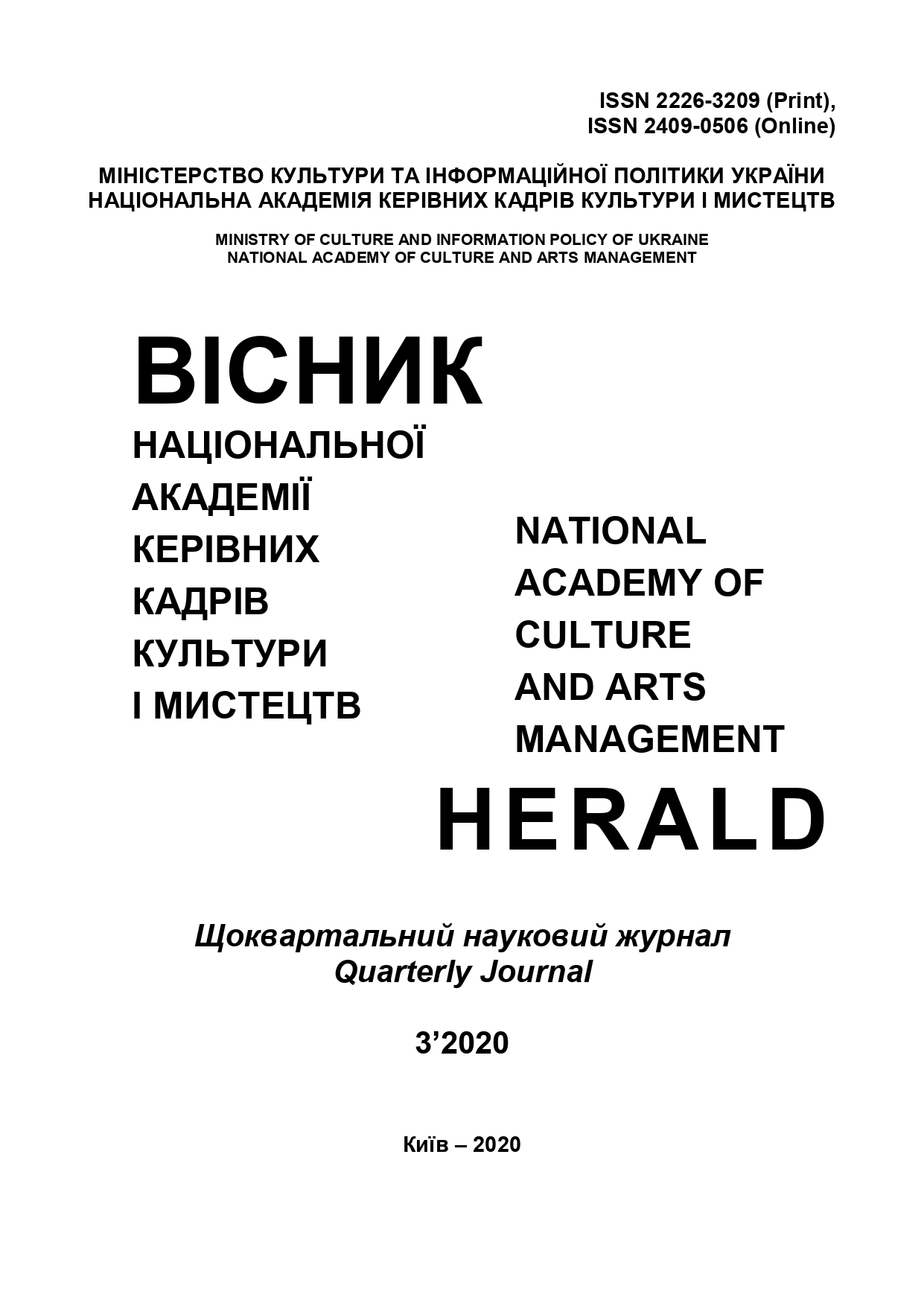Напрямок K-pop та його роль у контексті сучасної аудіовізуальної культури
K-pop's movement and its role in the context of modern audio-visual culture
Author(s): Anastasiya TormakhovaSubject(s): Music, Sociology of Culture, Sociology of Art
Published by: Національна академія керівних кадрів культури і мистецтв
Keywords: K-pop; musical culture; audiovisual culture; art; functions of art;
Summary/Abstract: The purpose of the article is to highlight the peculiarities of the audio and visual manifestations of the K-pop direction, to highlight those aspects that make it possible to trace the interaction of traditions and innovations within a given cultural and artistic phenomenon. This goal can be achieved by analyzing the factors that are presented in this direction - including the musical component, the visual, image, social, ideological, political, economic, etc. The methodology is related to the use of a comparative method to cover the characteristics of the development of K-pop, as opposed to the western directions of pop music. The method of analysis is used to identify key attributes of K-pop. The scientific novelty is to shed light on the particularities of the K-pop direction and to highlight its role in the context of the culture of the present. It is emphasized that K-pop should not be regarded as a purely musical phenomenon, as it embodies various cultural, social, economic, and even political factors and performs many functions other than purely artistic ones. Conclusions. K-pop is a field of development of popular culture in South Korea of considerable scientific interest. Unlike many of the phenomena present in music today, K-pop is a whole culture. This direction plays an integrative, ideological, communicative function, acting as a factor of integration of many Asian countries. K-pop is directly involved in the development of technology and has developed a strong interest in "idols", which are an integral part of this culture. An important role in promoting bands and performers pertaining to K-pop is the attention to visual and image principles that foster interest from the viewership. A more promising direction is a more thorough analysis of the dynamics of the formation of this direction and the identification of possible further ways of its development.
Journal: Вісник Національної академії керівних кадрів культури і мистецтв
- Issue Year: 2020
- Issue No: 3
- Page Range: 14-19
- Page Count: 6
- Language: Ukrainian

